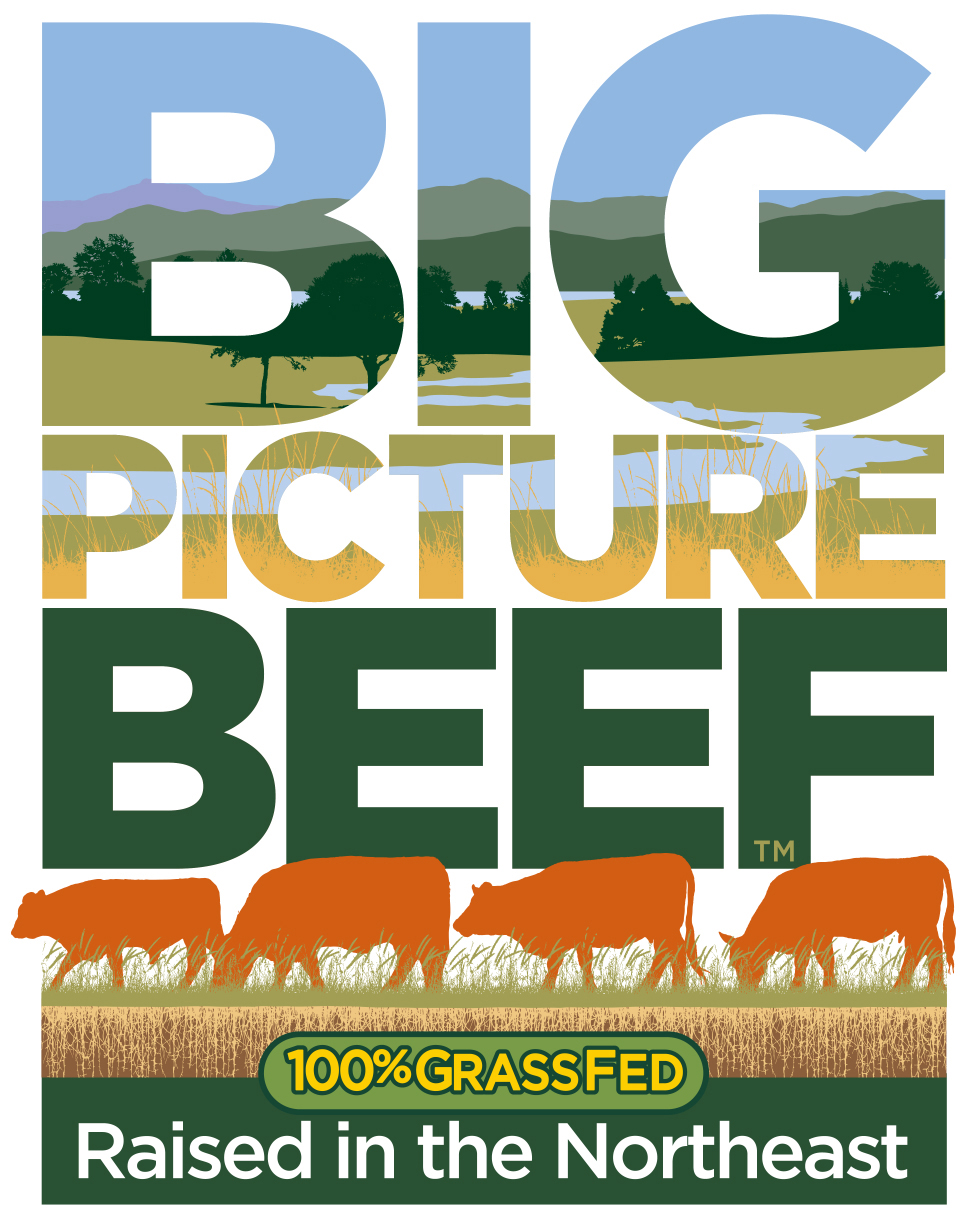HUMANE HANDLING
Big Picture Beef is committed to the wellbeing of our cattle. Our protocol and practices have been shaped by the needs of the cattle as ruminants and herding animals. Therefore they live on pasture and eat grass and forage - their natural diet. They rest, socialize, and care for their young according to their instincts as bovines. In caring for the animals throughout their lives, including their deaths, we are guided by the work of Dr.Temple Grandin, who has developed practices that reduce or eliminate animal stress and pain in connection with handling, transport, and slaughter.
THE LIVES OF OUR CATTLE
Our cattle live in pastures from birth. Their diet is grass and other pasture plants, with some hay in winter. They are healthy and robust without antibiotics or growth hormones; both types of drugs are prohibited by our farm protocol.
Our calves are born in the spring or the fall. They are born in the pasture, typically in a protected place chosen by the mother. Thanks to careful breeding, proper nutrition, and excellent health, they do not need help with birthing, and the calves thrive in their mother’s care. Our protocol requires that calves remain with their mothers to nurse for five months at a minimum, with ten months preferred.
In the Northeast, pastures are lush from April to October, but even in winter, when the grass has stopped growing and is often covered in snow, given a choice, these sturdy animals prefer to be outdoors, and either graze on stockpiled grass or eat hay. They develop thick, furry coats that protect them, even from harsh winter weather.
Most of their time is spent grazing, or resting and socializing in small groups of their own choosing. Because the cattle in our program have a docile temperament, we can handle them with minimal effort. Cattle are herding animals and express discomfort if they are temporarily isolated from the herd. When it is time for them to move to a new paddock for fresh grass, we move the flexible fence and they all walk into the new area readily, with the young ones frisking in the tall grass.
“…we can say that a cow grazing on grass is at least doing what he has been splendidly molded by evolution to do. Which isn’t a bad definition of animal happiness.”
Michael Pollan, Power Steer
HANDLING
We use handling practices recommended by Temple Grandin, whose principles for managing cattle emphasize remaining calm and quiet.
One of her principles is, "First experiences with new things should be good." She also emphasizes teaching the cows what is expected of them; for example, she notes that most cattle like to have their backs scratched or stroked, but "if they push back, the stroking must stop within one second," so that pushing is associated with the end of stroking.
Additional details about Big Picture Beef cattle management can be found in our pages for farmers regarding husbandry and pasture and grazing. For contrast to the way our cattle are raised, read about typical feedlot conditions.
AT END OF LIFE
When the cattle are transported to the slaughterhouse, they are moved in a group. Cattle that are docile and have been well treated, generally walk calmly, single file, up a ramp into the truck. The process should be unhurried and prodding unnecessary.
If cattle are pressured or frightened on the last day of their lives, this stress affects the color and texture of the meat. Therefore the meat itself is one indication whether or not the transport and slaughter process went well in terms of humane handling. This connection between the animal’s experience and the meat quality provides a practical incentive to follow animal welfare guidelines carefully.
Our cattle are slaughtered at the Vermont Packing House (VPH), a mid-size facility that has been operating for three years, and has a staff of 50. Outside, there are holding pens for the animals designed by Temple Grandin’s firm to meet the standards for humane livestock handling that she has set. High walls and a horseshoe design eliminate distractions and keep animals calm as they walk through. Each animal’s death is quick and unforeseen by the animal.
VPH is unusual in its commitment to transparency and education. Large windows allow interested visitors to observe the animals being handled and killed, and the carcass processed. Chefs, farmers, students, and teachers have come through the plant. Currently an average of fifty groups per year visit. The goal is to show people the process so they know how their meat gets to the package in the store.
VPH works with over 300 local farms, processing beef, hogs, and sheep, from slaughter to cooked and smoked items.
"I think using animals for food is an ethical thing to do, but we've got to do it right. We've got to give those animals a decent life, and we've got to give them a painless death. We owe the animal respect."
Temple Grandin
Note: Find a discussion here of some of the issues for workers in a meat packing facility.




